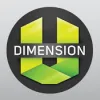Take a look inside 5 images
DimensionU
Pros: Fast-paced multiplayer gaming gives kids a fun way to review concepts together.
Cons: At its heart, this is basically a multiple choice quiz with game elements layered on top.
Bottom Line: DimensionU is a fun way for kids to review basic concepts, but there are other opportunities to get the same practice for free.
DimensionU lends itself to practice and homework after a lesson, or as a skills brush-up. Teachers can keep tabs on their class' progress through reporting tools like emails, a teacher dashboard, progress reports, etc.. If everyone in a class has the game, it could be fun to organize class tournaments and competitions, and would help get students to play on their own time as well. As an extension activity, teachers might also challenge students to think of their own low-tech games that cover similar concepts as DimensionU.
DimensionU is a collection of four games -- single or multiplayer -- that feature practice problems reviewing a variety of Common Core (CCSS) Math and ELA concepts:
- In Meltdown, students try to collect colored balls in sequence before time runs out. Each ball gives them a shot at answering subsequent multiple choice questions. Both balls and correct answers award points.
- In Swarm, students work with teammates to capture "nodes" by answering questions correctly. Playing with others definitely increases speed and engagement.
- In Tower Storm, students earn balls by answer multiple choice questions. They then throw the ball through matching hoops to create a tower.
- In Velocity, kids answer questions to earn items like jet packs or super jumps then use these abilities to compete in a race. This is probably the most fun of the games, and also the one that covers the least amount of content.
DimensionU covers a huge number of CCSS outcomes. It does offer "codes" -- chunks of text teaching concepts -- but students are unlikely to use them, so it works best as a review game. Following the traditional edutainment model, the game elements are often at odds with the multiple choice style review questions. So playing the game is something that precedes or directly follows doing the practice problems rather than the two being fully intertwined. It's more fun than a worksheet, and should encourage students who don't normally enjoy (or do) homework to spend some voluntary time on review. But it's not a compelling enough mixture of playful activity and learning to make it a great standalone learning tool for students to explore and dig deep into concepts.














